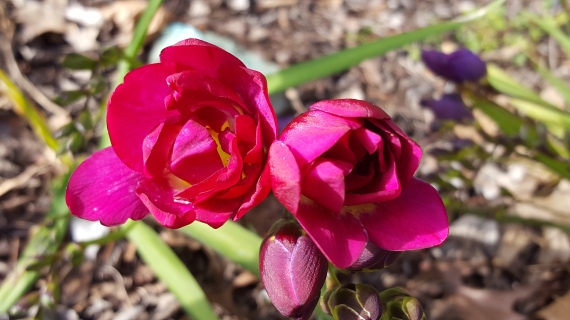 Each spring I eagerly await the appearance of my freesias. Their sweet aroma greets me every time I walk outside and their bright blooms are some of the first spots of color I see.
Each spring I eagerly await the appearance of my freesias. Their sweet aroma greets me every time I walk outside and their bright blooms are some of the first spots of color I see.
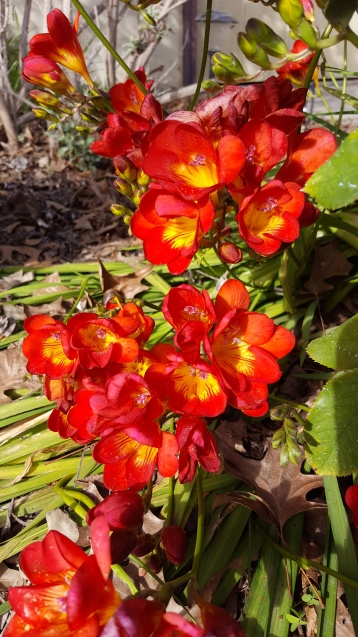 (All links open a new page, so you won’t lose your spot when you look around! Get information on gardening and cultural traditions, recipes, stories, and more!)
(All links open a new page, so you won’t lose your spot when you look around! Get information on gardening and cultural traditions, recipes, stories, and more!)
*A handy growing summary chart is at the end of the article.*
The blooms of freesias are often mottled and striped and some are multicolored, as well. They can be found in shades of fiery red, sunny yellow, purples, white, and fuchsia. Their aroma is sweet and honey-like, and the cut flowers are excellent in floral arrangements.
 Freesias grow from bulbs that can be planted nearly any time of the year in zones 9-11, though it is best to avoid planting in summer. They will start putting out their leaves once temperatures start to cool in late summer to early autumn, and will bloom in late winter to early spring. After they have finished blooming, the foliage will start to yellow and eventually die off. They then go dormant during the summer. Be sure to keep track of where they were, as they will grow back again.
Freesias grow from bulbs that can be planted nearly any time of the year in zones 9-11, though it is best to avoid planting in summer. They will start putting out their leaves once temperatures start to cool in late summer to early autumn, and will bloom in late winter to early spring. After they have finished blooming, the foliage will start to yellow and eventually die off. They then go dormant during the summer. Be sure to keep track of where they were, as they will grow back again.
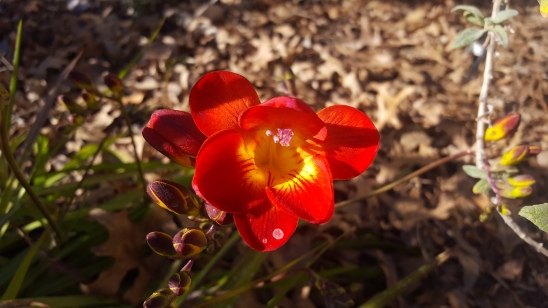 Freesias will propagate themselves each year by making more bulbs. Before long you will have larger clusters of bulbs that can be dug up to be planted elsewhere if you want. The best time to do this is when they just start to break dormancy and grow again in the fall. Carefully dig up some bulbs from the outside of the cluster and gently lift them from the soil then plant them in their new spot.
Freesias will propagate themselves each year by making more bulbs. Before long you will have larger clusters of bulbs that can be dug up to be planted elsewhere if you want. The best time to do this is when they just start to break dormancy and grow again in the fall. Carefully dig up some bulbs from the outside of the cluster and gently lift them from the soil then plant them in their new spot.
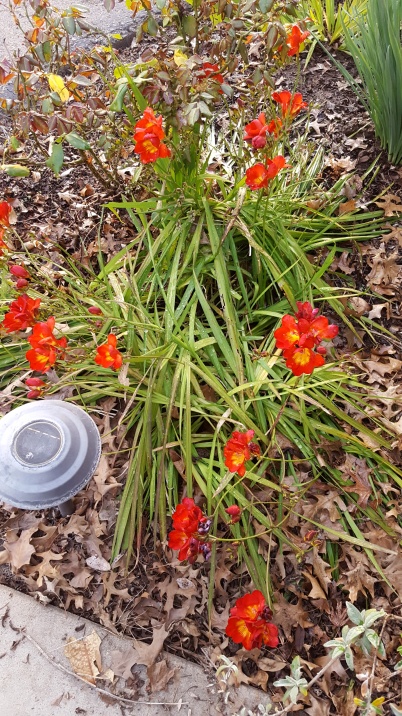 Freesias are drought and heat tolerant, being native to the Mediterranean climate of South Africa. This is why they are dormant during the summer. However, they can be grown in cooler climates with some adjustments. Freesias can not tolerate freezing soil so one option is to plant them as annuals in spring to bloom in summer. They can also be grown in pots and brought indoors during colder weather.
Freesias are drought and heat tolerant, being native to the Mediterranean climate of South Africa. This is why they are dormant during the summer. However, they can be grown in cooler climates with some adjustments. Freesias can not tolerate freezing soil so one option is to plant them as annuals in spring to bloom in summer. They can also be grown in pots and brought indoors during colder weather.
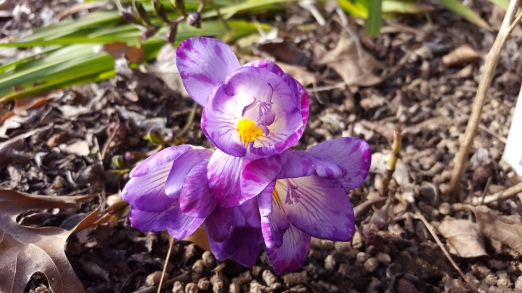 Freesias do not require a lot of water, and in fact, the bulbs may rot if left in too soggy of soil. Mine are growing in a semi-clay soil, but are not overly watered, so they are doing fine. They also prefer full sun, but can tolerate some light shade. Also keep in mind that since the foliage will die back, you will want to place them amongst other plants that can hide their empty spots during the summer months. Having plants nearby is also useful since the flowering stems have a tendency of flopping over, and neighboring plants will help prop them up.
Freesias do not require a lot of water, and in fact, the bulbs may rot if left in too soggy of soil. Mine are growing in a semi-clay soil, but are not overly watered, so they are doing fine. They also prefer full sun, but can tolerate some light shade. Also keep in mind that since the foliage will die back, you will want to place them amongst other plants that can hide their empty spots during the summer months. Having plants nearby is also useful since the flowering stems have a tendency of flopping over, and neighboring plants will help prop them up.
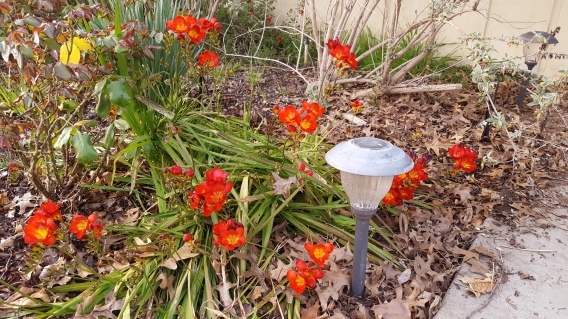 Plant Summary:
Plant Summary:
- Perennial: can be grown as annuals in cold winter zones
- Deciduous: foliage will appear in cooler weather, but will die back in hot areas
- Height: up to 2 feet
- Width: can spread as more bulbs are produced, but each plant is less than 1 foot
- Sun: full sun, can tolerate some shade
- Water: low
- Soil pH: neutral to slightly acidic
- Soil type: amend heavy clay or loose sandy soil
- Key nutrients: fertilize as you would for other flowers
- Planting time: best to start in fall as temperatures drop
- Zones: 9-11


This is something I did not expect to see in autumn. Once established, they develop a schedule of blooming early in spring. I know the bulbs are available with other spring bulbs, but I do not know if they are still available. They sell out pretty quickly. The last time I grew them, I got a bunch of bulbs at the same time, but kept them dry stored, and planted them in phases for about two months so that they would develop and bloom through a longer season.
LikeLike
These are actually pictures from this last spring. I like to post pictures of how each plant looks throughout the year when I can. Right now they are still putting out their leaves. It’s funny, I found a few that I forgot I planted several months ago!!
LikeLiked by 1 person
I do the same when I write about the bulbs, although I sometimes use a picture of dormant bulbs instead. They are not much to look at.
LikeLiked by 1 person
Yeah, not very exciting! I would have liked to have had a picture of one, though, to help point out which end goes down. It isn’t always clear!
LikeLiked by 1 person